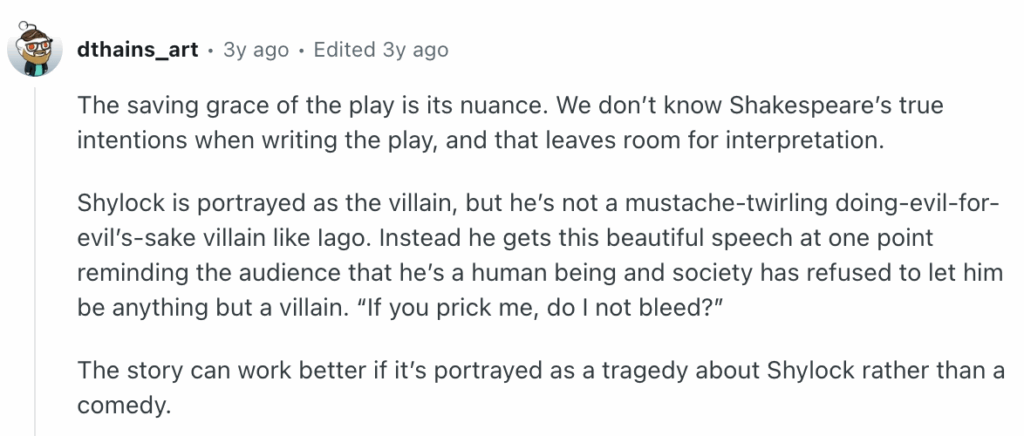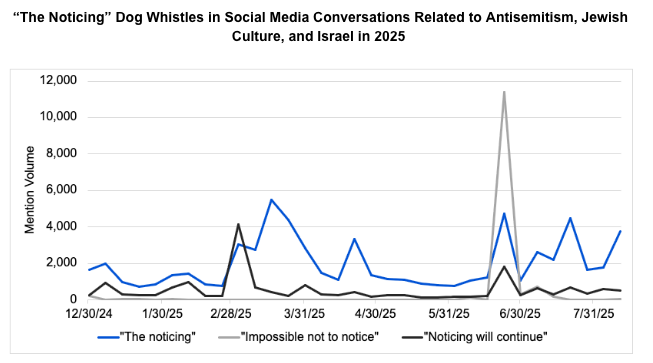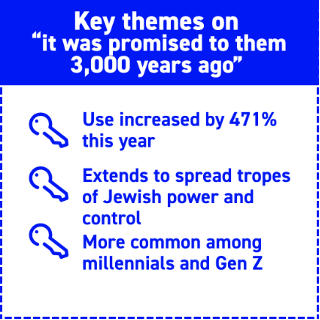Antisemitism has existed for nearly a thousand years and literature has played a central role in reinforcing it. From the twelfth century onward, Jews were often portrayed as villains in popular stories—depicted as greedy, manipulative, or morally corrupt. These depictions shaped public opinion and helped entrench long-lasting stereotypes—and they continue to this day.
Some of the most influential examples come from the stage and the novel. In Christopher Marlowe’s The Jew of Malta, the character Barabas is cast as a murderous and vengeful schemer. In Shakespeare’s The Merchant of Venice, Shylock—the Jewish moneylender—is portrayed as cruel and vindictive, famously demanding a “pound of flesh” as repayment.
What is a Shylock?
Though Shakespeare includes moments that show how Shylock is mistreated, the dominant cultural takeaway has long been the image of the greedy Jewish villain. Over time, “Shylock” became a catch-all slur for exploitative moneylenders, echoing through literature, politics, and everyday speech.
In the past 12 months, the mentions of “shylock” has increased by 290% on social media when compared to the prior 12 months, showing that this term is becoming more mainstream.
Many of these are laced with sarcasm or mockery, with users writing things like, “I didn’t know Shylock was antisemitic either. Or kike. Or sheister. Or Heeb.”
Others suggest replacing it with similarly problematic literary references: “Shylock is so passé. I vote we use Svengali instead.” (Sevngali, A coded Jewish figure who hypnotizes and controls a young woman in Trilby, by Maurier, is synonymous with manipulation and control)

This pattern continued into the 19th century with Charles Dickens’ Oliver Twist. Fagin, a Jewish character who leads a group of child thieves, is repeatedly referred to as “the Jew” and portrayed as conniving and corrupt. Given the reach of Dickens’ work, Fagin became one of the most influential antisemitic figures in literature.
After receiving a letter from a Jewish reader, Dickens revised later editions—but the damage was already widespread. Fagin continues to be casually invoked today, with people comparing criminals to him: “We have some terrible Fagin types using children as workers to move drugs for them.” In one instance, even a rabbi was compared to Fagin, underscoring how the stereotype persists in everyday speech.

Folklore also contributed to this. In the Grimm Brothers’ The Jew in the Thornbush, a Jewish man is tricked, humiliated, and ultimately punished, portrayed as deceitful and greedy. These kinds of stories presented Jews not as individuals, but as symbols of vice—often unnamed, interchangeable, and deserving of misfortune. They conditioned generations to associate Jewish identity with wrongdoing.
Today, these literary legacies remain with us. Online discussions reflect discomfort with how beloved writers like Shakespeare and Dickens contributed to these harmful portrayals.
One Reddit user framed it this way: “Portia the goddess, or Portia the spoiled rich girl? Shylock the noble man of suffering, or Shylock the small-minded patriarch? Comedy or tragedy? The history of the play’s interpretations encompasses all of these alternatives, and more.”

Still, the most telling evidence of these tropes’ endurance is in how language is used today. In 2014, then-Vice President Joe Biden used the term “Shylocks” to describe unscrupulous lenders, later apologizing and admitting he hadn’t realized its antisemitic roots.
Just this week, President Trump used the same term at a rally, again claiming he was unaware of its historical context. That both men—across time and political lines—used this word so casually shows how deeply embedded and normalized these harmful portrayals remain, even in public leadership.





